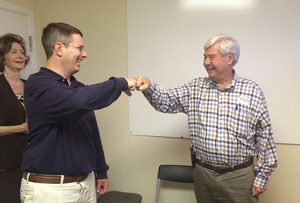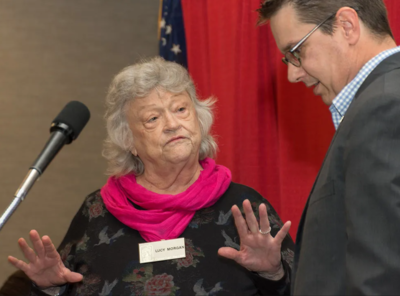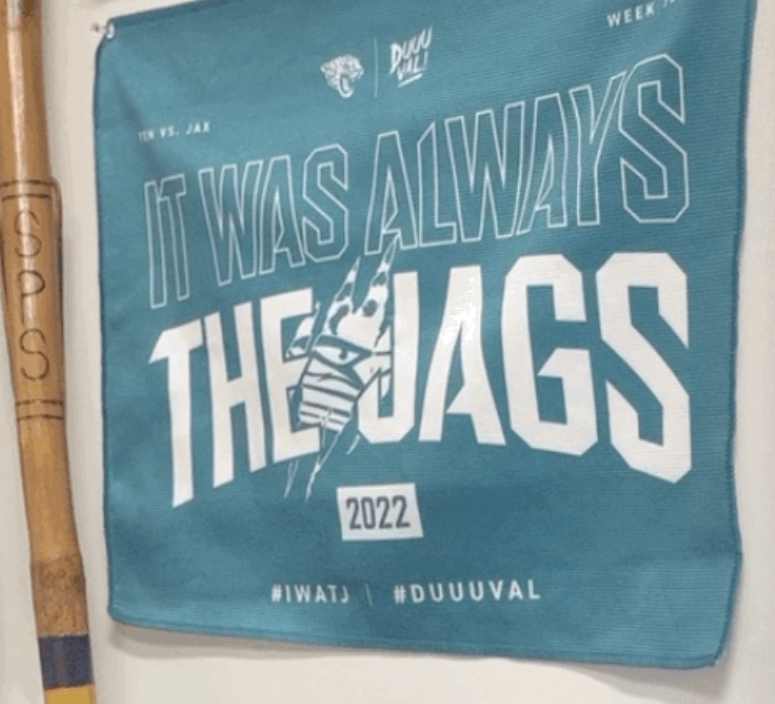What does a Win in Florida look like for Harris?
 Wednesday, August 14, 2024 at 10:16AM
Wednesday, August 14, 2024 at 10:16AM The Presidential race has reset. What looked and felt like an uphill slog in a handful of states to get to 270 for President Biden is today a far more wide-open race, where Vice President Harris has multiple pathways to the Presidency. All seven of the “battleground” states show Harris with a small lead in the polling averages, or the race tied.
But what about the state that traditionally has been on that list – the next state on that list: Florida?
The Biden – now Harris operation has a growing team here. According to public reports, there have been more new volunteer sign-ups for Harris in Florida than any other state in the country, and some polling I’ve seen, both public and private, show her doing better than Biden – both statewide, and in some down ballot races.
With a couple of polls being released, my phone/text/twitter/LinkedIn/pigeon carrier lines of communication have been blowing up, hence this piece. If you are reading this to get some mystical dose of hopium as a Democrat, or so you can say “Hey Schale thinks gonna turn Florida blue” (no offense, but I really hate that phrase, because it means nothing) or “Schale thinks she’s gonna lose, yeah MAGA,” (another phrase that I can’t wait to be gone from the lexicon), then you might as well stop reading. That isn’t the goal here.
Nor is it a “How Harris or Trump wins Florida” -- I might later take on as an academic exercise what a roadmap to a win, at least from the numbers perspective, looks like for both campaigns. However, until I decide to give up sleep for a week to do that piece, I offer these thoughts about how I think about Florida:
1. Former President Donald Trump must win Florida.
Longtime readers of this blog have heard me say this since forever – winning Florida isn’t necessary for Democrats to win for the Presidency – but it is an absolute requirement for Republicans. The last Republican to win the White House without Florida was Calvin Coolidge, hence the title of our 2008 campaign plan was “Win and You Are In” – noting that Florida alone would guarantee a Barack Obama win.
The underappreciated storyline to what Michael Bloomberg did here in 2020 was the much bigger impact he had outside of Florida because of the way it changed the dynamic in Florida. He forced President Trump to, in the words of Princess Bride’s immortal Vizzini to fall “victim to one of the classic blunders” – in this case, the most famous of said blunders: “never get involved in a land war in Asia.”
Bloomberg forced a real fight – he made Trump spend money – he made them spend candidate time – and he made them divert money from elsewhere to shore up the fight here, leading to massive television advantages in the closing weeks in the states that flipped from Trump to Biden.
I don’t think we will see that kind of funding again, but everything Harris can do here is a bonus. If they continue to raise good money to fund an expanded map, keeping the fight here is just smart politics. Even if the Trump folks are likely to win here in 2024, they can’t risk losing here.
2. There is some evidence of Florida reverting to the mean.
I think a lot of people following 2008 and 2012 on my side made assumptions about Florida that were based only in hope – and I think some of my Republican friends are making the same mistake about the 2022 election.
In 2002, Jeb Bush won Florida by nearly 15 points, and 2 years later, George Bush won it by 6 – despite a massive effort from my side on behalf of Kerry. In the following four years, Democrats won three of the next six statewide races, picked up 10 seats in the Florida House, and a handful in the State Senate and Congress.
Florida has gotten more Republican – anyone who says otherwise isn’t being honest. I’d argue at least some, if not most of that is due to national trends that play themselves out here. Republicans have made gains with Hispanics – they have made gains with Black Men – and they have made gains with non-college white voters --- and Florida is home to large, and growing populations of all the above. But nothing in politics is permanent.
A smart friend noted to me after 2022 that the data showed that Republican turnout in 2022 was 105% of what it was in 2018 – and given the state growth, that is a perfectly reasonable and normal jump. For Democrats, it was 80% of 2018 – which is, in a technical term, an absolute, effing crater. Also in 2022, NPA voters functioned like Republicans, in part because of DeSantis campaign, and in part because my side didn’t have one.
We have seen some reversion to the mean this year: Democrats won the Mayor’s race in Jacksonville – a city that has been very competitive for the last decade in all but one cycle. Democrats have performed in state house special elections at levels that look more historically normal than 2022. In both of these cases, not only has turnout been more normal, NPAs, and even moderate Republicans showed up and operated more like Democrats in the polling booth. And the poll that was released in Miami Dade showing Harris up 15 – if that margin is accurate, that is far closer to historical averages (noting, Dade bumps around a lot) than 2022.
My point is the above doesn’t mean the state is trending back – or that Harris is somehow going to win – but it does mean that the margins that DeSantis carried in 2022 – or Bush in 2002 – or Bill Nelson in 2012 – are more likely outliers than trends. It is a perfectly reasonable thing to believe that Florida is currently a lean, or even likely GOP state – without also thinking that top of the ticket margins like DeSantis had here are a permanent fixture.
3. BUT STEVE, WHAT ABOUT VOTER REGISTRATION???
My views on voter registration are well known – extremely well known. I got taken off a few Christmas Card lists for a piece I wrote in 2023 about the failures of my side on issues such as voter registration. I believe that a lot of money has been lit on fire in this state in the name of voter registration by Democratic-aligned efforts, and we have basically zero to show for it. And I hope the Harris folks are investing in it.
That being said, I do think we need an honest conversation about the current state voter registration numbers.
We all agree Florida has undergone a large growth spurt, right?
So, what if I told you there were 1.1 million fewer active registered voters today than there were in 2020?
At this point in 2020 and 2022, there were approximately 14.5 million registered “active” voters.
Today that number is 13.4 million.
I put the word “active” in quotation marks, because the state a few years back redefined what it meant to be an active voter, and that change has had a significant impact on voter registration numbers, by moving a ton of voters off the “active” list to the “inactive” list – and those voters are disproportionally Democratic and NPA.
It is kind of like in golf – if I make a 9 on a hole, my handicap might only count 6 of those shots for handicap purposes– and the score will look better there – but it doesn’t change the fact I made a 9. Think of the current “active” number as handicap adjusted.
But you add back in the nearly 2.6 million voters who are now categorized as “inactive” - the state’s total voter rolls total roughly 16 million, a number that makes a lot more sense when you think about the growth. And when you add in the inactives, the GOP edge is still large in raw numbers – about 700K, but as a percentage, their lead is 4%.
Most of these “inactive” voters, and quite likely, a sizable number of them will. Who among them will? How many will? But what we know is 75% of these inactive voters are Dems or NPA voters.
Again, to be clear, I am not defending the lack of sustained voter registration efforts, nor am I suggesting the state hasn’t gotten more Republican – just that the active numbers don’t tell the same story they did four years ago. Moreover, on my side, honestly, I hope the Harris campaign and the Florida Democratic Party are using the newfound enthusiasm to register new voters. If they don’t, it is a missed opportunity.
4. The Real Win is Longer Term.
The last point - on using this campaign as an organizing tool, is the most important outcome of the Harris investment here.
Democrats have two national looming issues:
· Population growth in the south is going to change the electoral college math by the time of the 2032 election. Right now, the “Clinton states” plus “Blue Wall” gets a Democratic candidate to 275-277 electoral votes (dependent on the congressional districts in NE and ME). After the 2030 census, it is very likely, if not almost assured, that number will be under 270 – maybe as low as 265. In other words, my side’s path to the Presidency requires new math: Arizona, Georgia, North Carolina, and yes, states like Florida, and even Texas.
· Neither party can maintain any kind of sustainable majority in the US Senate without growing the map. If the only places that either party win US Senate races are states that either Trump or Biden won in 2020, the US Senate will be 50-50. Both parties need to win in places they don’t normally win to secure any kind of real majority in the Senate going forward. The Democratic map in 2024 is proof positive of this.
My side must open new fronts on the political map – and yes, Florida, at 30 electoral votes – and maybe 33 in 2032, is a place we should do it – and here is why:
Growth trends in Florida are going to do what they do – sometimes they benefit Republicans, sometimes Democrats. But the bigger issue for Democrats here is the coalition – our coalition isn’t doing well with the types of voters that we have here in spades.
For Democrats to win nationally – we must improve with Hispanic voters, we must make more inroads with white voters without a college degree, and we need to rebuild our relationship as a party with Black Men. The fact that Harris does better with good chunks of these voters is partially why not only does the map look better for her today than it did for President Biden last month – but why Florida looks better.
If we can address these more systemic issues in our coalition generally – something I think is vital for the long term, Florida looks increasingly competitive almost immediately. To this end, what the Harris campaign can do here with their growing volunteer capacity – as we could do in both 08 and 12, is not only expand the electorate through registration, but expand the coalition by pushing the conversation into communities we traditionally ignore.
Conclusion
To the folks who keep asking me if Harris can win here, the answer is complicated. The reality is their math doesn’t run through Florida – so without the kind of spend you need to get to a win, the answer is almost surely no.
While I think they can help with turnout in certain pockets, I don’t think that the amendments suddenly change the game here. Every two years it seems there is a new amendment that is going to impact the up-ballot races, and every two years, the people who predict this end up looking around on election day surprised that it didn’t.
Moreover, for Democrats who want the constitutional amendments to pass, you must embrace the fact that a significant number of voters will vote for these amendments and vote for President Trump. And that’s OK. Politics isn’t always black and white as folks on Twitter tend to think it is.
But that doesn’t mean this cycle isn’t important for Dems – and that the Harris effort doesn’t matter. Back in 2011, one of my 08 teammates called and asked me about taking a senior campaign opportunity in Georgia in the re-elect. They were concerned that it would be all for not – a waste of time when the campaign eventually deployed resources elsewhere. My advice was simple: if you are willing to take it, you have a chance to build something that, down the road, is going to matter. And it did – eight years later, Georgia elected two Democratic United States Senators, and a Democratic President.
Back in 2006-7, then DNC Chairman Howard Dean sent staff to Florida, at a time when most people had written it off, and the work folks like my dearest of brothers, Nate Jenkins did in those years before 2008 teed us up for success in 2008.
When folks ask me if I think Florida is a smart play, or whether the campaign should spend elsewhere, I argue that choice is a false one. What they are doing right now is a smart investment – and honestly, low-cost investment, and as long as money remains good, and they aren’t robbing from the pathways to 270, they can keep a toe in the water here. My wise stepfather has often counseled me that it isn't necessary to make a decision until you have to make the decision, and right now, the Harris camp has the luxury of continuing to build here.
That is why what Harris is doing is important – like her campaign in general, it is a chance to hit the reset button here – a chance to re-engage in communities we’ve ignored, to create some energy at the local level, a chance to register voters, and to build actual long term political party infrastructure. For me, as a Democrat, that is a win.
And when the campaign is over, hopefully donors will step up and fund the continuation of the work. More than likely, it will take some time to feel the real impact of her investment – and that is OK too. Rome wasn’t built in a day – and neither was the success we had between 2006 and 2012.
And like the Jacksonville Jaguars making the rare smart decision by locking up Josh Hines-Allen, Evan Engram, Tyson Campbell, and yes, Trevor Lawrence to long term deals, Harris is doing something my side also talks a lot about, but never really does: investing in the pieces necessary for long term success.
 steve |
steve |  Post a Comment |
Post a Comment | 



